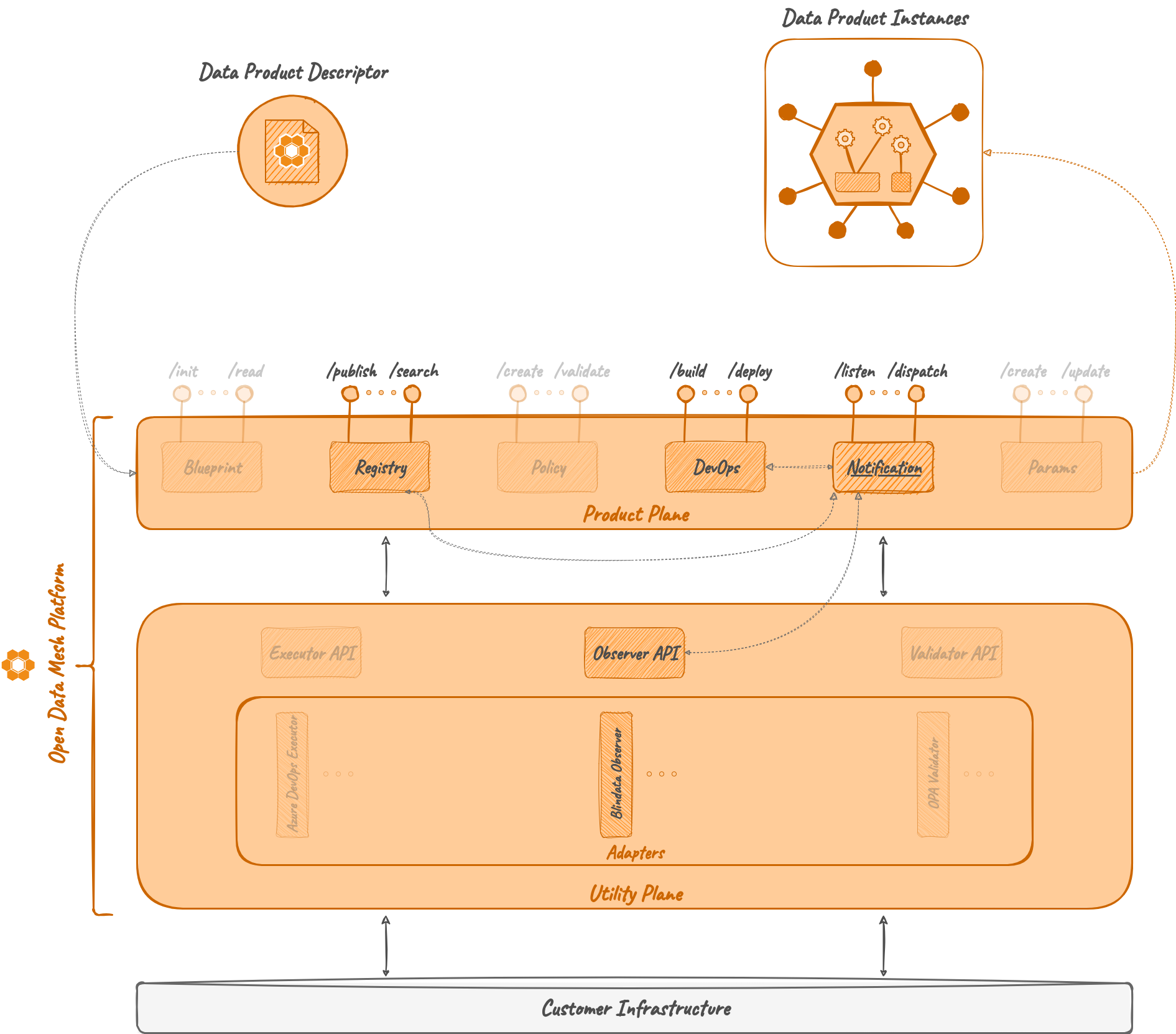Notification⚓︎
Overview⚓︎
The Notification Microservice is the ODM Platform service to allow other ODM modules to dispatch notifications. Each notification involves a specific Event and is forwarded to a list of registered adapters of the Observer of the Utility Plane.
The Notification main tasks are:
- store any configured Observer and handle their lifecycle
- receive a dispatch request for the occurrence of a specific event, retrieve the registered Observers and forward them a notification of the event
- keep track of Event occurrences
- keep track of Notification and their Status
Concepts⚓︎
Event⚓︎
An Event represents the occurrence of a specific operation in the ODM processes, such as, for example, the creation of a Data Product, or the execution request for an Activity.
Any Event has a type, describing the event itself, a beforeState and an afterState representing the object before and after the event occurrence. As an example, an Event of "DATA_PRODUCT_UPDATE" type has the JSON description of the original Data Product as beforeState and the JSON description of the same Data Product after the update operation as afterState.
Notification⚓︎
A Notification is the default container of an Event before dispatching it to a specific listening service. It's the default object expected for requests to Observer Adapters, and it enriches the event with metadata that will be processed and updated by the receivers.
Each Notification represents a specific Event for a specific Observer.
How it works⚓︎
Architecture⚓︎
As the majority of the ODM services, the Notification Microservice is composed of two modules:
- Notification API: a module containing abstract controllers, Java resource definitions, and a client to interact with the controller.
- Notification Server: a module implementing the abstract controllers, any component useful to interact with the DB (entities, mappers, repositories, ...), and services needed for the Registry operations.

Relations⚓︎
Even if it's theoretically an independent application, the Notification is not meant to work as a standalone microservice. It is designed as a proxy between Product Plane microservices, like Registry and DevOps, and many possible Observer Adapters of the Utility Plane.
Notification operates transparently to the ODM processes; each interaction is orchestrated by the Product Plane services, with the validity of the response being determined by the Observers receiving the notifications, except in cases of communication errors.
Every instance in the documentation where a relationship with Observer is mentioned, implies the underlying presence of the Notification, acting as a proxy in the communication flow.
Technologies⚓︎
Other than the default Java, Maven and Spring technologies, the Notification module does not make use of any particular technology.
References⚓︎
- GitHub repository: odm-platform
- API Documentation: Notification Server API Documentation